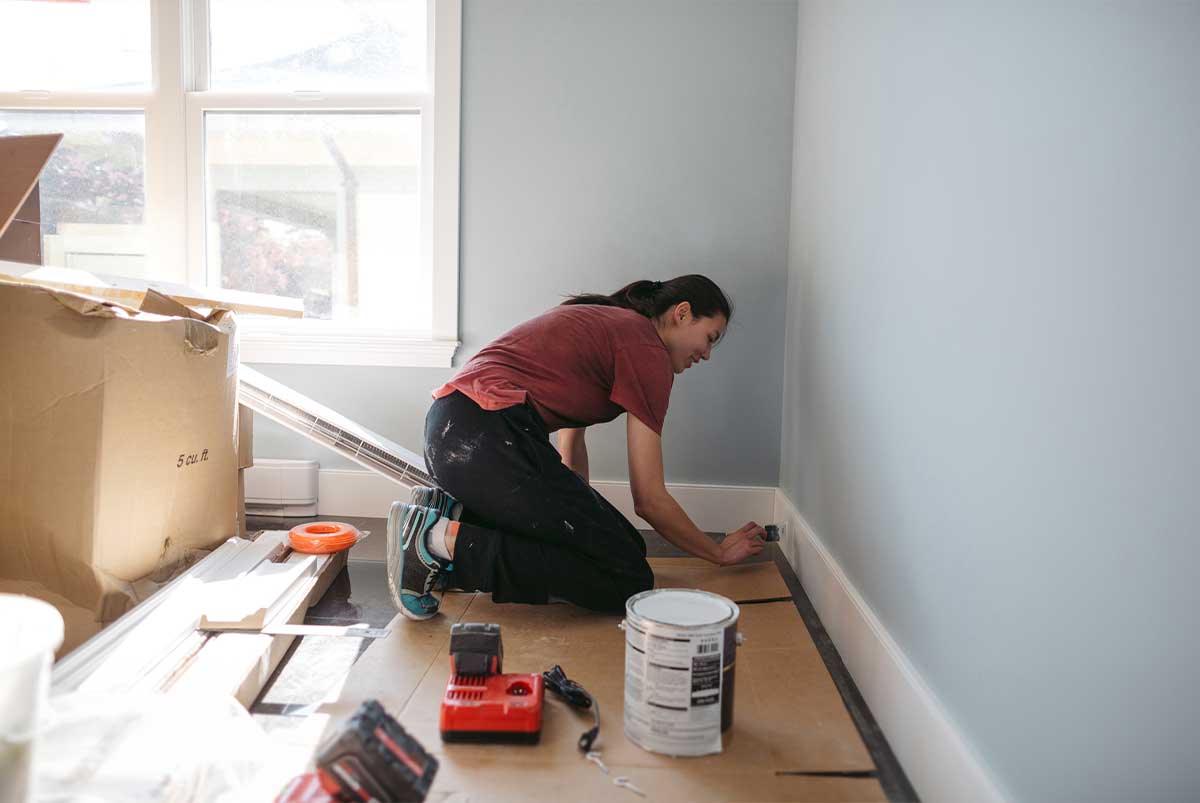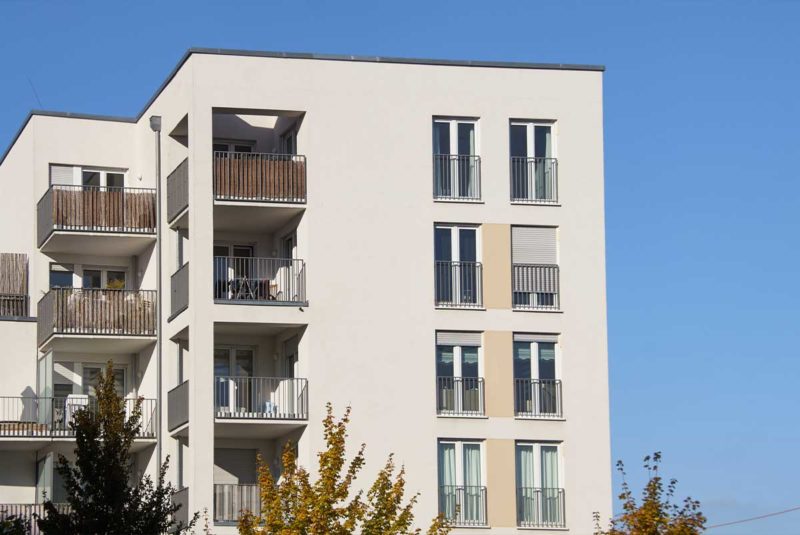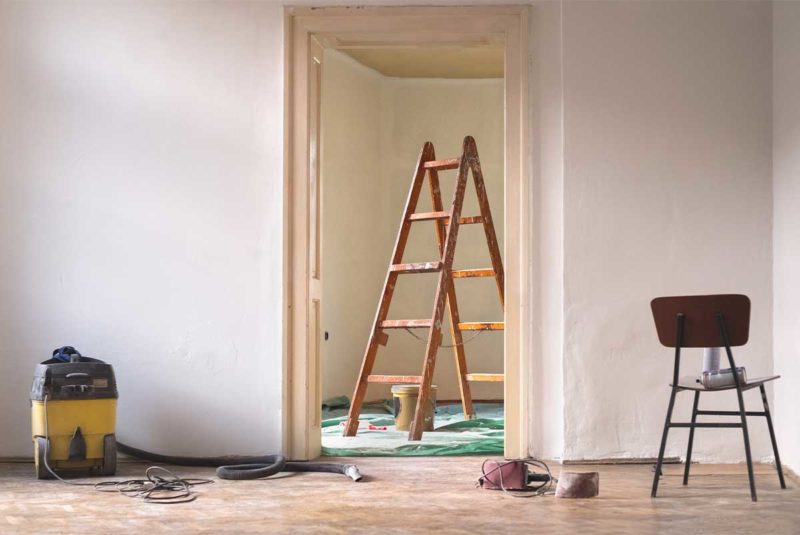Ready To Buy a Home?
Get Approved to Buy a Home
Rocket Mortgage® lets you get to house hunting sooner.
It’s a seller’s market. And that means home buyers are up against stiff competition.
Acting fast and coming up with as much cash as possible can be the difference between a successful purchase and losing out against other eager buyers.
If you can qualify for a Federal Housing Administration (FHA) loan, you may also have an edge over other buyers. To qualify, you need steady income, proof of employment and a debt-to-income (DTI) ratio that’s 43% or less. With a FICO® score of 580 or better, you only need a 3.5% down payment while a FICO® score of 500 – 579 requires a 10% down payment.[1]
The types of homes you’re looking at might also give you a competitive edge in this market. A fixer-upper could be your chance to get into the real estate game and transform a home to fit your vision.
The FHA can be helpful here, too. You can use an FHA 203(k) rehab loan to cover a fixer-upper’s mortgage and get the extra money you need to repair and remodel. Qualifications for an FHA 203(k) loan are fundamentally the same as for other FHA loans. If trying to buy a home has been feeling like a long shot, an FHA 203(k) loan could be your best bet!
What Is an FHA 203(k) Rehab Loan?
You get an FHA 203(k) rehab loan through a conventional lender, but it’s secured through a government loan program. The program lets borrowers renovate fixer-uppers without having to get separate mortgage and home improvement loans.
With an FHA 203(k) loan, the cost of repairs is baked into the mortgage. This means you can pay off the cost of your home improvements in small amounts over the life of your loan.
Because these loans are government-backed, lenders are often more flexible with lending terms. This gives first-time home buyers and buyers with low credit, no credit, high debt or a bankruptcy on their credit report a chance at securing financing.
And this is not a drill! Credit scores as low as 580 and down payments as low as 3.5% don’t disqualify you.
While that’s welcome news for a lot of potential home buyers, getting an FHA 203(k) loan is no free-for-all. There are some rules.
How Do FHA 203(k) Loans Work?
Nothing good in life is free … of rules. So it should come as no surprise that there are strict guidelines that govern the FHA’s lending program.
FHA 203(k) loans fund fixed-rate and adjustable-rate 15- or 30-year mortgages provided by qualified lenders who have been approved by the Department of Housing and Urban Development (HUD).
Two distinct expenses make up an FHA 203(k) loan’s total amount:
- The amount necessary to purchase a home (or in the case of a refinance: pay off debt)
- The amount necessary to make needed repairs
And there are three important requirements home buyers must keep in mind:
- FHA 203(k) loans can only be used on a property if it is the borrower’s primary residence.
- Renovation or construction projects require a minimum of $5,000 in eligible repairs (not every upgrade counts).
- Your home improvement must start within 30 days of closing. And you’ll have to complete the work within 6 months.
What Are the Types of FHA 203(k) Loans and What Gets Covered?
There are two primary types of FHA 203(k) loans: limited and standard. The FHA 203(k) loan you apply for will depend on your own unique needs.
As a rule of thumb, if you’re looking to make cosmetic fixes, a limited 203(k) loan will do the trick. Use a standard 203(k) loan for work that’s more extensive and involved. But let’s break the two types down a bit more.
Limited 203(k)
Limited 203(k) loans (aka Streamline 203(k) loans) are the more popular of the two loan types and they are the easiest to qualify for. Limited 203(k) loans allow for up to $35,000 in financing to make home repairs. They cover a wide range of fixes – but major structural repairs aren’t included.
Figuring out how big of a loan you’ll need will depend on the work that needs to be done and the bids submitted by contractors. If you reach the end of your home improvement project and you still have money left over, whatever’s left gets credited back to the lender rather than tacked onto the loan.
If you’re thinking of saving money by going totally DIY, you may be disappointed.
Unless you can provide a letter that confirms your construction industry experience, and you can demonstrate that you’ll be able to commit a significant amount of time to the project, a contractor is a must for most projects.
Limited 203(k) loans cover a wide range of basic home repairs and renovations, including:
- Bathroom and kitchen remodeling
- Upgrading appliances
- HVAC system repair or replacement
- Replacing carpeting and flooring
- Repairing safety problems
- Improving energy efficiency
- Adding patios, porches and decks
- Septic system upgrades
Standard 203(k)
For projects that need a little more than a limited 203(k) loan can offer, a standard 203(k) loan may be a better fit.
The standard 203(k) loan is designed to finance projects that cost more than $35,000 – and the projects can include major structural repairs. In addition to home renovations and rehabs, the standard 203(k) loan can also help with larger construction projects like:
- Turning a single-family home into a multiunit property
- Relocating a home
- Connecting to a sewer system or public water line
- Bringing a home into compliance with Americans with Disabilities Act (ADA) regulations
Just keep in mind that the standard FHA 203(k) has stricter requirements than its limited counterpart, including:
- Minimum renovation costs of $5,000
- Obtaining the services of a qualified HUD consultant to oversee repairs
What Are FHA 203(k) Loan Requirements
Ready to take the plunge into homeownership with an FHA 203(k) loan? You need to meet these requirements to be eligible:
- Purchase the home as a primary residence and plan to occupy the property within 60 days of closing.
- Get your future home appraised by an FHA-approved appraiser who can provide inspection reports verifying that the property meets the FHA’s minimum health and safety standards.
Is an FHA 203(k) Loan a Good Idea?
An FHA 203(k) loan may help you finance the purchase of a home you might not otherwise be able to buy. But the restrictions and requirements of the loan may not be for everyone. Take a look at the pros and cons of taking out a 203(k) loan.
PROS of an FHA 203(k) Loan👍
With an FHA 203(k), you can become a homeowner and build equity quickly. Because you’re also financing home improvements, you avoid the higher costs of a construction loan. The benefit is you know you’ll end up with a home that has the features you want.
The interest rates for 203(k) loans typically beat the market rate, so you save money over the life of the loan.
Because you only need to make a 3% down payment, you can reach your dream of homeownership without a lot of money in the bank. In addition, you can typically be approved for a larger mortgage because the appraisal value of the home looks at its post-renovation value.
CONS of an FHA 203(k) Loan👎
Along with the standard mortgage application paperwork (which is already significant), you have to submit your architectural or engineering plans for your home improvement project. You can also expect the loan process to take longer than it would for a traditional FHA loan or any other traditional mortgage.
Lenders typically charge a supplemental origination fee when dealing with a 203(k) loan. You may also see a higher charge from your appraiser because they have to re-appraise the property after your improvements are completed.
The FHA 203(k) program requires ongoing mortgage insurance premiums (MIPs). You’ll typically pay an extra 1.75% upfront for this insurance, which protects the FHA in case you default on the loan. You’ll also have to make monthly MIP payments of 0.45% – 1.05% of loan value each year (usually ranging from $37 – $88 per month per $100,000 of loan value), which adds to your housing expenses.[2]
Weigh these benefits and disadvantages against each other, and make sure your budget can handle the expenses involved before you decide to apply for an FHA 203(k) loan.
How To Get FHA 203(k) Loans, Explained
Applying for an FHA 203(k) is similar to applying for any other kind of mortgage loan. As a starting point, you’ll need the following:
- A Social Security number
- Proof of U.S. citizenship
- Proof of income (such as pay stubs or bank statements)
Prepping for the long haul and taking these beginning steps will set you on a promising path to homeownership.
While we can’t promise that filling out forms will be as fun as daydreaming while you’re scrolling through real estate websites, knowing what to do, how to do it – and why – will be the elbow grease that transforms your daydream fixer-upper into your new home.
Find an FHA 203(k) lender
Do yourself a favor: find a good lender from the very start. To do that, you can either visit a HUD office or check out the lender list search tool on the HUD website.
If you’re researching on the website, scroll down and check the 203(k) Rehabilitation Mortgage Insurance Program box at the bottom. It’ll show you the lenders who have authorized FHA 203(k) loans in the past 12 months.
Some lenders may even provide a 203(k) consultant (sometimes known as a HUD consultant) to help you through the process. This can be a big benefit. The consultant knows how to spearhead parts of the process that might feel overwhelming, like work write-ups and cost estimates.
Write your proposal
FHA 203(k) loans require a home renovation proposal as part of the application process. Break out your pen and paper or open up a fresh doc. You’ll need to put together a summary of the work to be done both inside and outside the home as well as a cost estimate (even if you plan on doing some of the work yourself).
Get an appraisal
An appraisal is a normal part of the home buying process, and that will be the case for your fixer-upper purchase, but FHA 203(k) loan appraisals come with a twist.
Some lenders may require an “as-is appraisal” reflecting the current home value before any work starts, while others will ask for an appraisal of the potential future value of the property once the proposed work has been completed.
The good news is that, in most cases, one appraisal can provide you and your lender with both of these.
Link up with your lender
When you’re comfortable with your proposal, the home appraisal has been completed and you have all your documents in hand, it’s time to revisit your lender.
As long as your lender is satisfied with the paperwork, you’ll reach the lending finish line: signing the paperwork.
After that, it’s time to celebrate! Raise a glass, grab your favorite takeout or take a really long, well-deserved nap – we won’t judge.
What Are the Alternatives to an FHA 203(k) Loan?
Of course, a 203(k) loan isn’t your only option. Depending on your credit, you may qualify for a conventional construction loan. Or, if you’re looking to make repairs on a home you already own, you can borrow against the available equity in your home.
Conventional construction loans
Fannie Mae offers HomeStyle® Renovation loans and Freddie Mac offers CHOICERenovation® loans. Like the FHA 203(k), these loans let you borrow money for home improvements and renovations based on the improved value of the home.
However, because these are conventional loans, they usually require a better credit score compared to an FHA 203(k) loan.
Home equity loans
If you already own a home and want to make improvements, you have options. You can borrow against the available equity in your home (the difference between what you owe and the value of your home) using a home equity loan or line of credit (HELOC). To qualify for these loans, you will need a good credit score and at least 75% – 80% equity in your home.
Cash-out refinance
Another option is a cash-out refinance. With this option, you refinance your first mortgage (hopefully at a lower rate) and borrow more than you owe. This lets you take cash out of the home’s equity, which you can apply toward repairs and renovations.
Use an FHA 203(k) To Turn a Fixer-Upper Into Your Future Home
Maybe you were under the impression that you needed flawless credit to buy a home. Maybe someone in your life tried to discourage you from falling too hard for fixer-uppers and insisted that you only look at move-in-ready properties.
That’s old school.
Because the FHA 203(k) doesn’t automatically disqualify home buyers with lower-range credit scores, you can still own a home even if your credit is a work in progress. And if you’re willing to put in the work, an FHA 203(k) loan can get you the cash you’ll need to take your fixer-upper from eyesore to enviable.
Take the first step toward buying a home.
Get approved. See what you qualify for. Start house hunting.
The Short Version
- FHA 203(k) loans are available for all kinds of borrowers looking to expand their buying options, but they are really popular with first-time home buyers
- Borrowing opportunities are available for those with less-than-perfect credit – a boon for younger buyers who don’t have a long credit history or those interested in fixer-uppers
- FHA 203(k) loans can't be used for all home repairs, but lots of common upgrades are covered
Federal Deposit Insurance Corporation. “203(b) Mortgage Insurance Program.” Retrieved April 2022 from https://www.fdic.gov/consumers/community/mortgagelending/guide/part-1-docs/203b-mortgage-insurance-program.pdf
U.S. Department of Housing and Urban Development. “APPENDIX 1.0 – MORTGAGE INSURANCE PREMIUMS APPENDIX 1.0 – MORTGAGE INSURANCE PREMIUMS.” Retrieved April 2022 from https://www.hud.gov/sites/documents/15-01MLATCH.PDF




